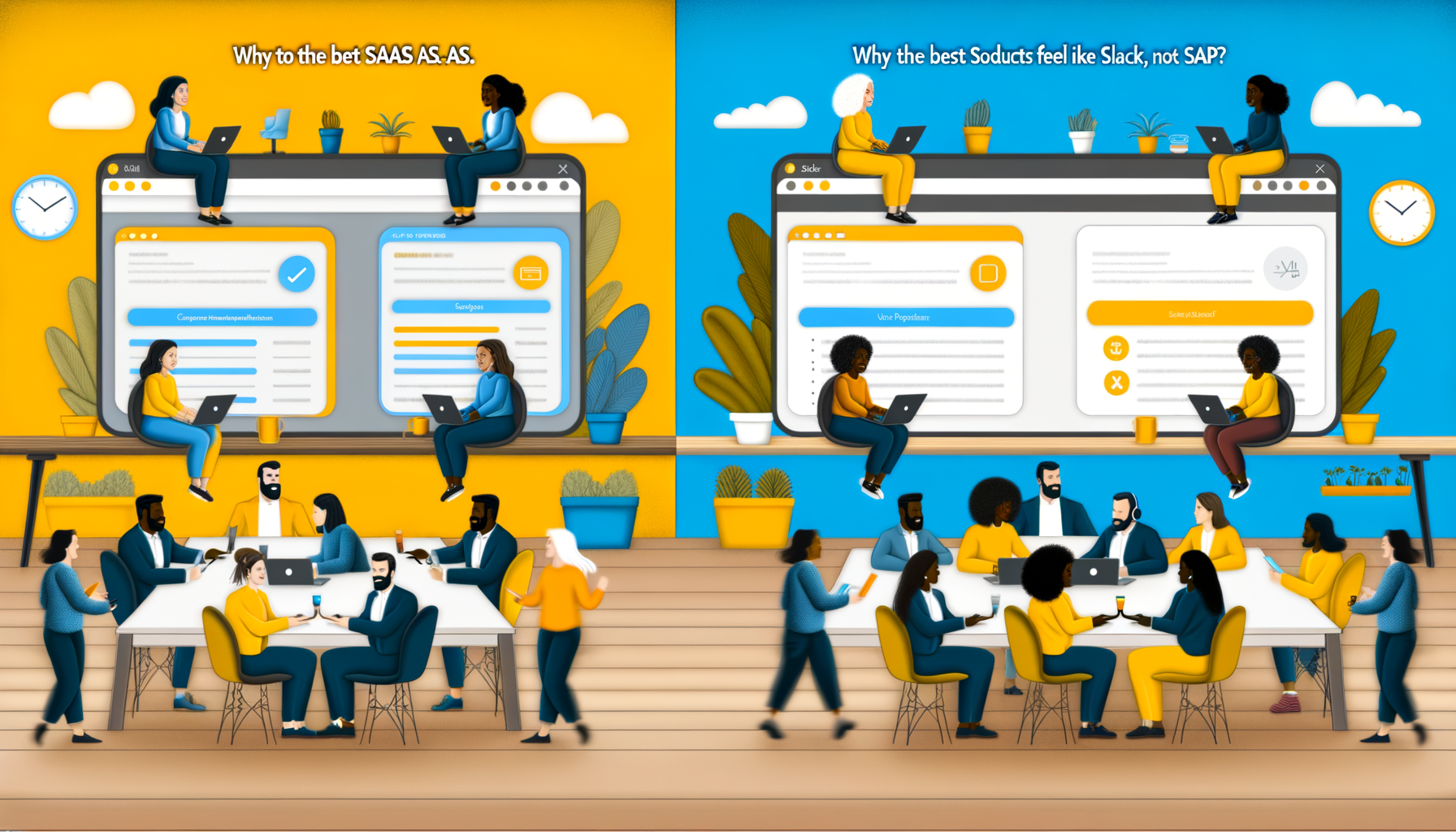
Why the Best SaaS Products Feel Like Slack, Not SAP
Understanding the Appeal of User-Centric SaaS Design
As someone who’s been entrenched in the world of entrepreneurship and product design, I’ve had the opportunity to see firsthand how the best SaaS products are crafted. They’re not overloaded with complex features like traditional legacy software. Instead, they feel intuitive and engaging, much like the beloved Slack. This is not to denigrate SAP or similar stalwarts of enterprise software but to highlight the need for simplicity and superb UX in modern SaaS design.
The Shift Towards Simplicity in SaaS Design
In the ever-evolving SaaS landscape, simplicity has emerged as a critical differentiator. Users today are accustomed to seamless digital experiences, and their expectations are set by consumer apps like Slack that marry powerful functionality with intuitive design.
The challenge many SaaS developers face is balancing robust functionality with ease of use. A tool might boast a myriad of features, but if it feels cumbersome or confusing, users are likely to seek alternatives. This is a key insight for any startup or tech company: Focus not only on what your software can do but on how effortlessly users can achieve their goals using it.
Why User Experience (UX) Takes Precedence
User experience is no longer a secondary concern; it is at the forefront of product success. Here are a few reasons why UX is crucial for modern SaaS products:
- First Impressions: A clean, intuitive design captures user attention and sets the tone for their interaction with your product.
- User Retention: Positive experiences encourage continued use, while frustrating interfaces drive users away.
- Customer Satisfaction: A well-designed product generates user satisfaction, potentially leading to recommendations and organic growth.
Consider products like Slack that become integral to team workflows due to their seamless integration and ease of use. These products illustrate a paradigm where less is more, and simplicity leads to superior user engagement.
Designing For The User: What Really Matters
Building a user-centric SaaS product begins with empathizing with the end-user’s journey. When designing, keep these points in mind:
1. Prioritize Core Features
Focus on the vital features that align with core user needs. It’s tempting to add bells and whistles, but these can clutter the interface and create unnecessary complexity. Restrict your feature set to what users truly need and use most, offering an experience that feels smooth and straightforward.
2. Simplify Onboarding
The onboarding process is a user’s first engagement with your product. Make it intuitive and helpful, with tools like guided tours or simple tutorials. This early interaction sets the stage for ongoing user satisfaction.
3. Continuous Feedback Loop
Stay connected with your users through feedback mechanisms. Regularly update and refine your product based on user insights to ensure it continually meets their evolving needs. This builds trust and makes users feel valued and heard.
Embrace SaaS as a Dynamic Product
In product design, especially within the SaaS space, agility is a valuable asset. Products should not be static; they should evolve with user needs, technological advancements, and industry trends. Learning from users, adapting to their needs, and iterating based on real-world application are the hallmarks of successful, user-centric SaaS products.
At the core, equating simplicity with functionality is not about cutting down on innovation or offering less; it’s about crafting experiences that users find meaningful and enjoyable. Modern SaaS products thrive when they feel less like tools and more like partners that aid in accomplishing tasks efficiently.
This philosophy is something that resonates strongly with our mission at Foundercrate, where we strive to empower entrepreneurs by providing the resources and insights they need to bring their user-centric software visions to life.
Conclusion
As a developer or entrepreneur venturing into the SaaS market, the goal should be to replicate the engagement model of products like Slack—where simplicity and usability meet powerful performance. This user-centric approach not only attracts new users but keeps them loyal, driving growth and success.
I encourage you to consider how you can apply the principles of intuitive UX and simplicity to your projects. For further insights and resources on startup success and SaaS design, follow along as I share more of my journey and experiences.
